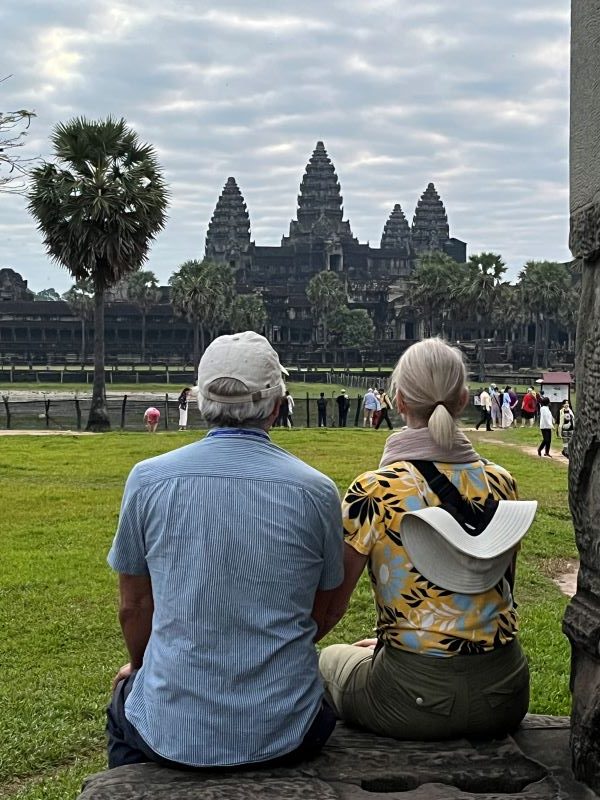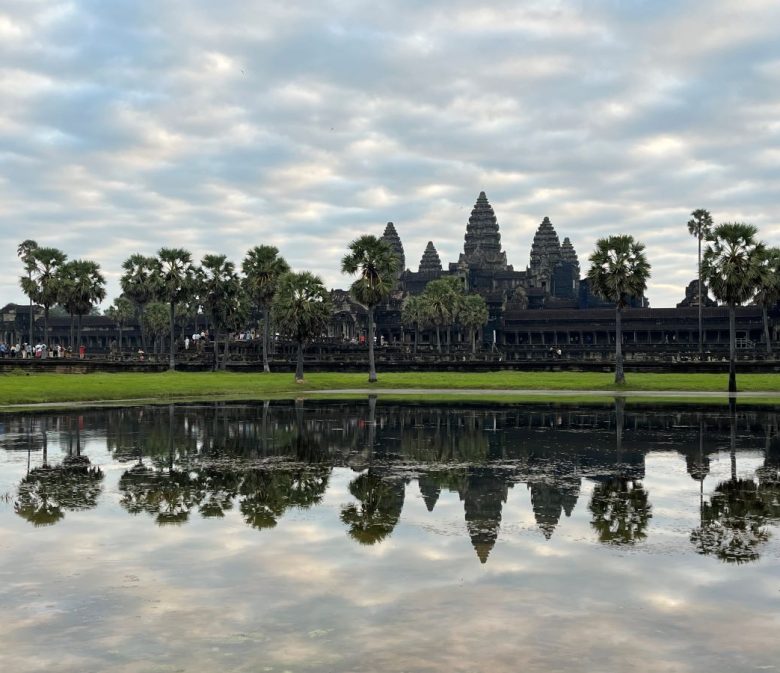Under a star-filled, pre-dawn sky, my husband and I sat with hundreds of other sleepy tourists waiting for the sun to rise behind the temple known as Angkor Wat.
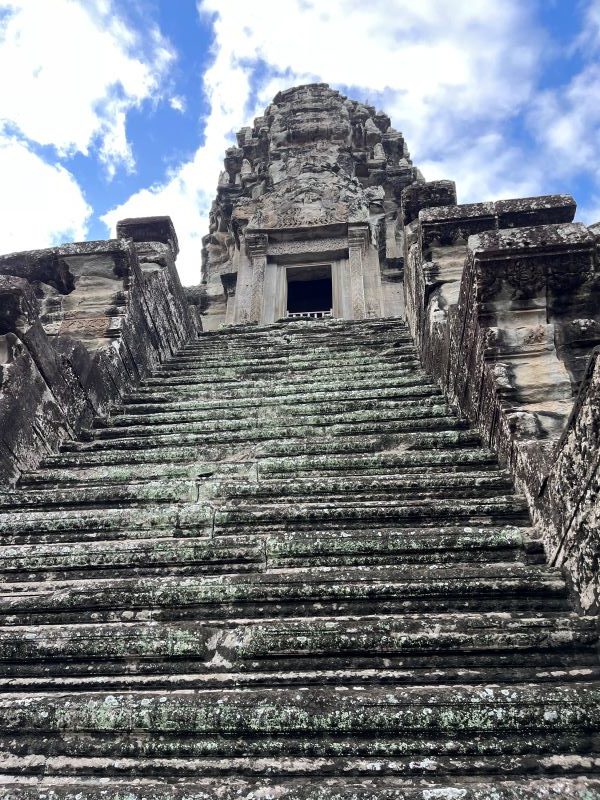
The ancient, five-spired temple slowly revealed itself as the sun tipped over the eastern horizon. First in shadowy silhouette against the brightening sky and then in full 3-D splendor as the sun rose higher. Our grogginess due to the 4:00am alarm (to procure a premium viewing spot) was quickly forgotten. After sitting transfixed for several minutes, we stood up, walked across the moat bridge, and entered the west-gate of the famous wat.
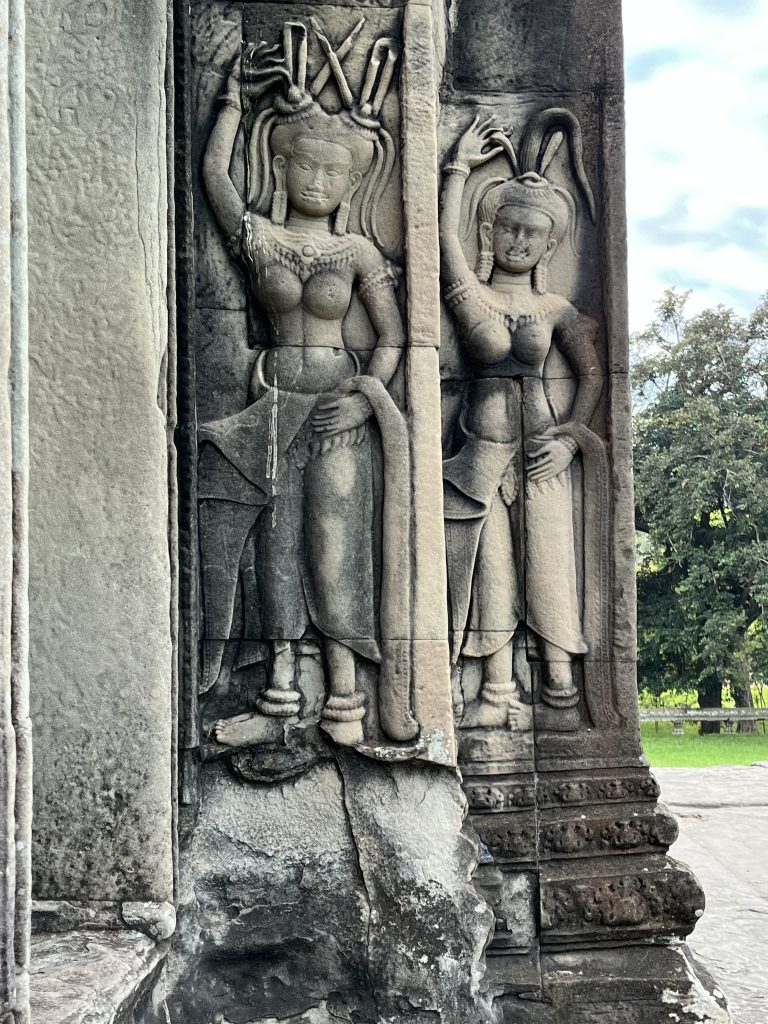
The 3-story temple, built in the 12th century, is made entirely of stone. There are several incredible bas relief carvings on the outer walls and pillars, while the carvings on the inner walls depict stories of wars, Hindu tales, and everyday life.
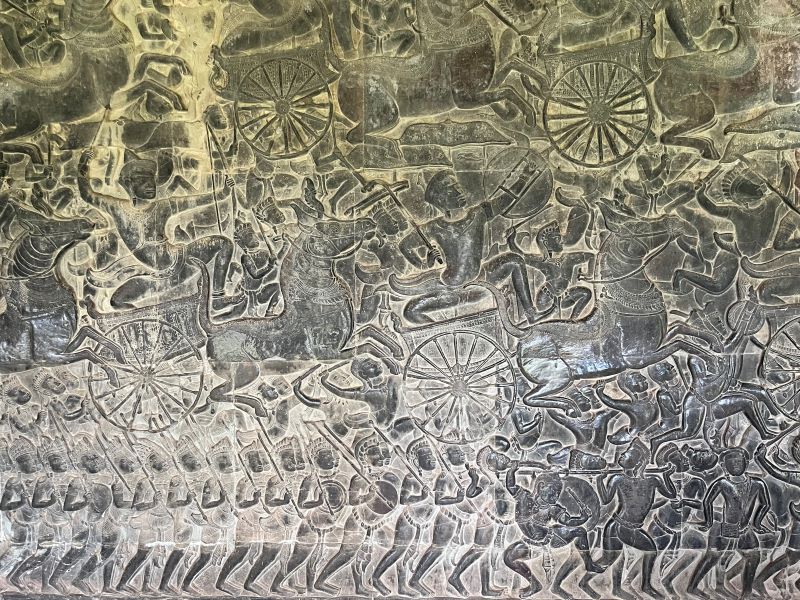
I didn’t know before my 2-day guided tour that Angkor is a large, 400-acre area that was the center of the Khmer Kingdom over several centuries.
72 major and several hundred minor temples are scattered throughout the Angkor Archaeological Park. The temples, dating back to the 9th – 15th centuries, have their own stories and reflect the religious leanings (Buddhist or Hindu) of the current ruling Khmer King. Each king built a temple meant to house the gods and in doing so, proved the legitimacy of his power. They also wanted their temple to be more lavish than any built by predecessors.
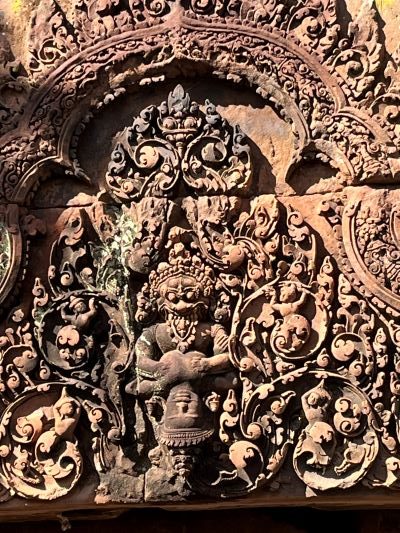
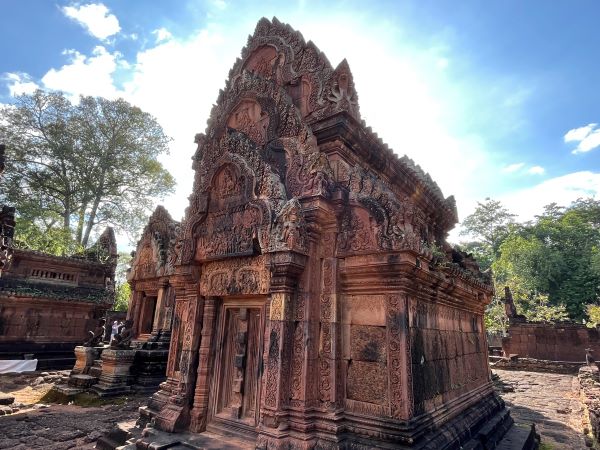
The temples include intricate sculptures, friezes, and artwork. We were regularly tongue-tied when walking up to a new temple, relying heavily on, “Wow” and “Awesome.” Not exactly profound I know, but our guide assured us that it’s a pretty common reaction of many of the people he has brought to the temples.
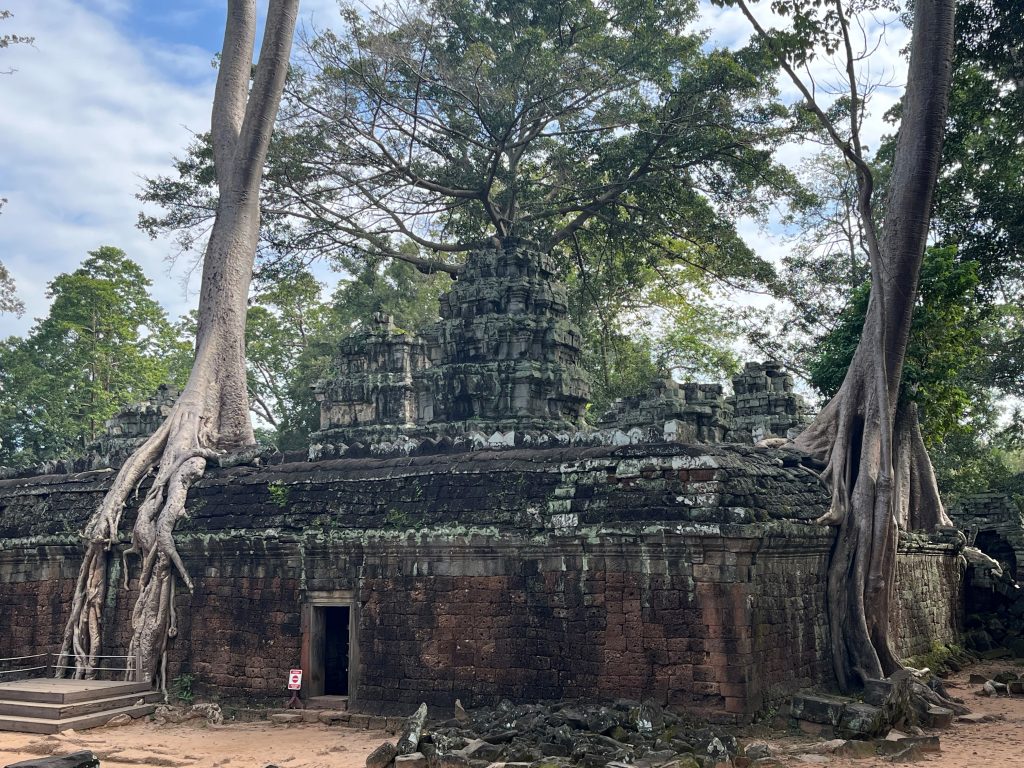
Ta Prohm Temple is one of the most popular for visitors (after Angkor Wat). The site, used for some of the filming of Tomb Raiders, feels mystical as trunks and roots of several old-growth trees have completely entwined themselves into many of the temple walls, as if holding them up with their bony fingers.
In 1992 the entire 400 acres of the temple complex was named a UNESCO World Heritage site, and many countries have stepped up to help restore some of the sculptures and crumbling stonework. I love knowing that the Angkor Archaeological Park will be preserved for future visitors to experience and learn some of Cambodia’s long and storied history, revealed through its glorious temples.
